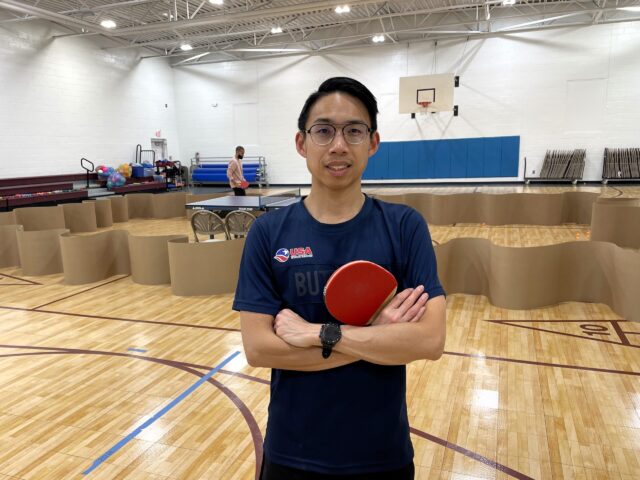(by: Alan Chu)
Set SMART Process Goals: Focusing on the Journey Over the Destination
As table tennis players, we all dream of winning major tournaments and achieving great competitive success. In this blog post, we'll explore how to master the process through effective goal-setting strategies, thereby increasing your chances of achieving your desired outcomes.
In the March 2024 Mental Training Tip, I introduced the “WIN” mentality, the ability to focus on “What’s Important Now.” One key strategy to foster this mindset is to prioritize the process (the journey) over the outcome (the destination). This becomes especially crucial when important tournaments like the Olympics or US Nationals are approaching.
Harnessing the Power of Process and Performance Goals
To better focus on the process, you can harness the power of goal setting. Specifically, you should set three types of goals: process, performance, and outcome goals.
- Process Goals:
- Focus on the specific actions, behaviors, and processes required to improve performance.
- Emphasize the journey and things the individual can control directly.
- Performance Goals
- Focus on the execution and skill level demonstrated.
- Evaluate measurable standards of performance that are partially controllable.
- Outcome Goals:
- Focus on the final result or competitive achievement.
- Depend on other external factors (e.g., opponents) that are often uncontrollable.
Research shows focusing on process and performance goals, which could be further broken down into physical, technical, tactical, and psychological components, can enhance motivation, confidence, and consistency. While outcome goals could sometimes motivate us, solely focusing on or overly prioritizing the outcome can increase anxiety and undermine performance.
Setting SMART Goals
For any goal you set, ensure you apply the golden standard: the SMART (specific, measurable, achievable, relevant, and time-bound) principles. Here are some examples:
Goal Type: Process
SMART Goal: Run 2 miles twice a week over the next 8 weeks.
Goal Type: Performance
SMART Goal: Increase cardiovascular endurance by 15% as measured by a mile run.
Goal Type: Process
SMART Goal: Practice the execution of the tomahawk serve for 1 hour a week over the next 6 weeks.
Goal Type: Performance
SMART Goal: Achieve consistent spin and placement in my serve evaluated by my coach and video recording.
Goal Type: Process
SMART Goal: Study and implement an offensive playing pattern against defensive players by watching video analysis and practicing specific drills for 1 hour per week over the next month.
Goal Type: Performance
SMART Goal: Increase the execution of the offensive playing pattern by attacking with a forehand loop at least one-third of the points in match play.
Goal Type: Process
SMART Goal: Practice mental imagery (visualization) techniques for 15 minutes before each training session for the next 6 weeks to improve focus and confidence.
Goal Type: Performance
SMART Goal: Maintain focus and confidence with the use of a consistent routine including imagery and positive body language at all times.
Mastering Your Journey to Success
Ready to put these tips into practice? Here’s what you can do to get started:
- Identify one to two areas of your game you’d like to improve.
- Set SMART process goals and potential performance goals for those areas.
- Track your progress and revise those goals if needed.
- Share those goals with others to keep you accountable!
Focusing on the process and mastering the journey over the destination will not only help you develop a stronger WIN mentality but also make table tennis even more enjoyable!























